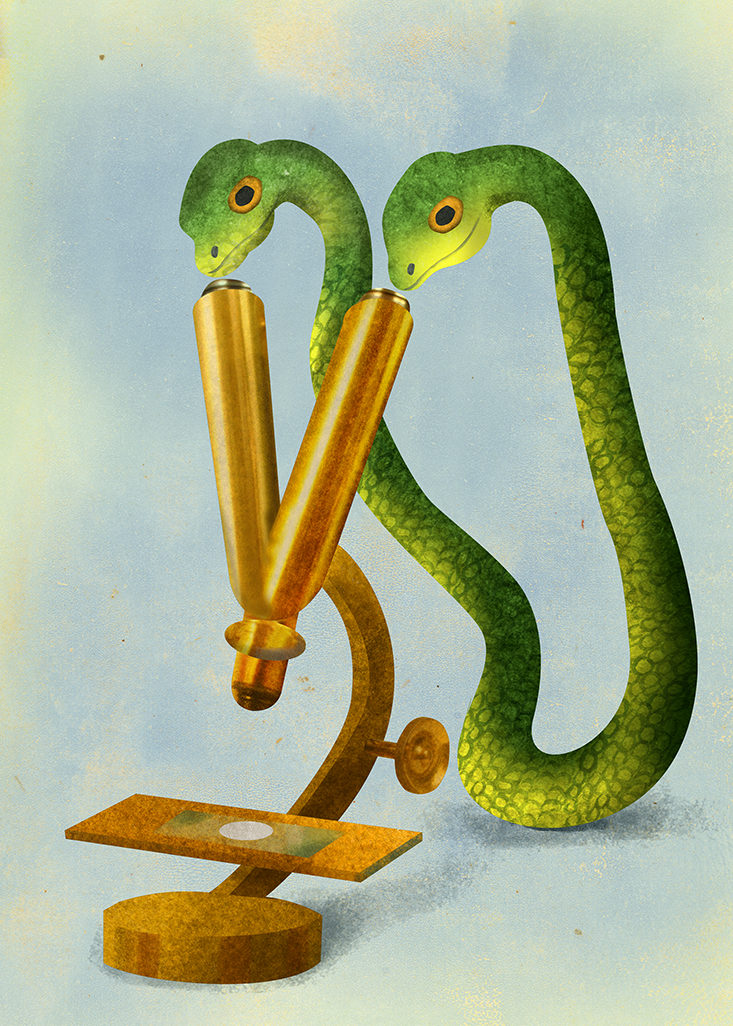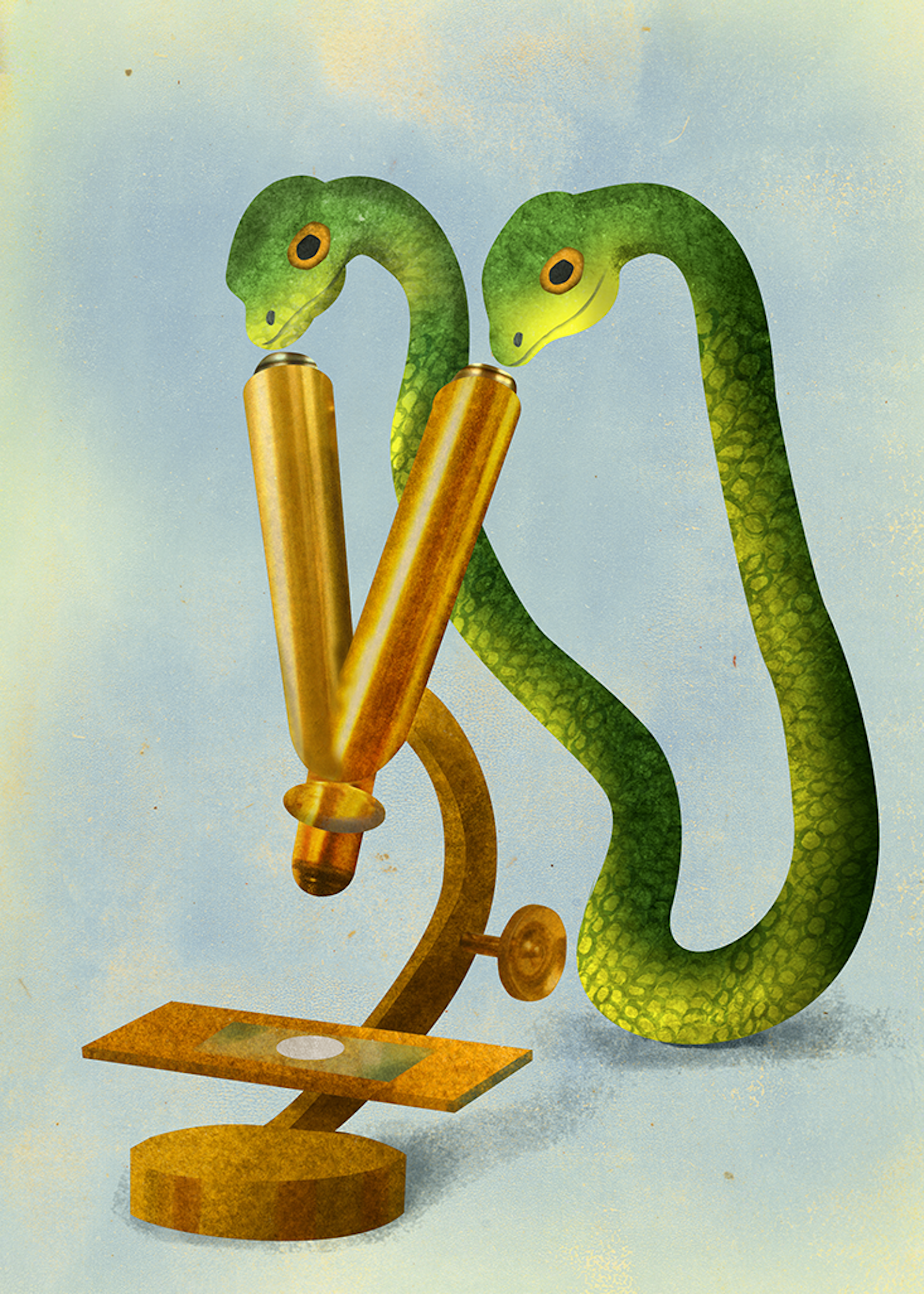
Finding regularity in nature is the bread and butter of science. We know that reptiles lay eggs, while mammals bear live young; the Earth revolves around the sun every 365.25 days; electrons glom onto protons like bears onto honey. But what if some oddity seems to defy the laws of nature, like the platypus, an egg-laying mammal? What about an anomaly like a two-headed snake? Or a newborn baby who seems to be neither boy nor girl, but something in between?
These questions fascinated the founding fathers of science, and their attempts to explain such rarities and marvels helped shape modern science. In fact, nearly all the great philosophers and scientists of 17th-century Europe—Descartes, Newton, and Bacon notably among them—were obsessed with anomalies. If they couldn’t explain the unlikely—a solar eclipse, a comet hurtling toward Earth, a narwhal tusk (was it a unicorn?)—all bets were off about an underlying explanation of nature.
Lorraine Daston, executive director of the Max Planck Institute for the History of Science in Berlin, has spent decades studying the emergence of modern science. In an interview with Nautilus, she explains how strange and unexplainable occurrences led to illuminations of nature.
Centuries ago, monsters seemed to embody the unlikely in nature. Why were early philosophers and scientists so fascinated by monsters?
They were interested in exceptions to the rule. One has to keep in mind that the 16th and 17th centuries were times of extraordinary religious, economic, and intellectual upheaval. From both the Far East and the New World, Europe was deluged by novelties of all kinds, such as animals that no one could possibly imagine, like birds of paradise and armadillos. On the religious front, monsters were seen as portents foretelling the apocalypse—the Second Coming. It was also a time of intellectual revolution. Copernicus published his book on the solar system in 1543. That same year, Andreas Vesalius published his book on the anatomy of the human body.
The emotional response could flip over from one moment to the next, from horror to wonder and back again.
For European thinkers in the early 17th century, the scientific ground on which they stood was extremely unstable. Everything was changing, and people like Francis Bacon realized it was possible that the best minds over the last two millennia had been dead wrong about everything. He used monsters and other marvels as a kind of intellectual hygiene to jolt people out of their assumptions about the natural world. In Aristotelian natural philosophy, monsters and other anomalies were seen as outliers, to be acknowledged but not explained. Bacon turned the tables and used monsters as a weapon against the ruling orthodoxy in natural philosophy and natural history.
Were monsters seen as frightening?
That was certainly one view. Birth deformations, like two-headed cats and conjoined twins, were terrifying but also electrifying. They seemed to be a telegram from God announcing the end of time, the end of the world. But in another context, they were seen as wonders—not as terrifying, but astonishing, a sign of the fecundity, the creativity and variety of nature. So the emotional response could flip over from one moment to the next, from horror to wonder and back again. In one early 17th century sermon in an English parish about the birth of conjoined twins, the minister harangued his parishioners not to treat this monstrous birth as a wonder to be gawked at and admired, but as a horrifying portent that they should repent immediately.
How did this struggle to explain unlikely occurrences relate to the birth of modern science?
These anomalies were seen as challenges. By the 17th century, it was pretty clear that Aristotelian natural philosophy was doomed. The question was what would replace it, and there were lots of fiercely competing theories. Monsters and other marvels offered extreme cases. Could your revision of natural philosophy explain such things? This made monsters and wonders more prominent in the late 16th and early 17th centuries than they’ve ever been before or since in the history of science. For the most part, science is interested in the regularities of nature—and that makes sense. Why would you devote time, thought, and ingenuity to explaining what only happens once in a blue moon? But in this period, anomalies very briefly took center stage when it came to scientific explanations.
What about the founders of modern science—Galileo, Descartes, Newton, Leibniz? What was their interest in nature’s oddities?
Descartes thought that if you’re putting forward a new theory of everything, you should be able to explain these outlier cases. He even thought you could explain what was considered an old medieval marvel, in which the corpse of a murder victim would bleed again in the presence of the murderer or the murder weapon. Leibniz sent a report of a dog that could talk to the journal of the Paris Academy of Royal Sciences. It could bark out six words in French, including “chocolat.” Everyone was trafficking in marvels in the 17th century.
The Scientific Revolution was remarkable. But some people think we’ve lost something in our current age of rationality and science. They talk about how the world has become “disenchanted,” that we’ve lost the capacity to be swept away by wonder. Do you see that as a problem?
I don’t. It’s very difficult to square this morose and elegiac discourse about the disenchantment of the world, which was very common in the early 20th century, with any working scientist who is afire with enthusiasm and delight and wonder about what he or she is working on. I mean, why do these people voluntarily work 80 hours a week?
Steve Paulson is the executive producer of Wisconsin Public Radio’s nationally syndicated show To the Best of Our Knowledge. He’s the author of Atoms and Eden: Conversations on Religion and Science. You can subscribe to TTBOOK’s podcast here.
A version of this interview originally appeared in our August 2013 issue, “The Unlikely.”


























